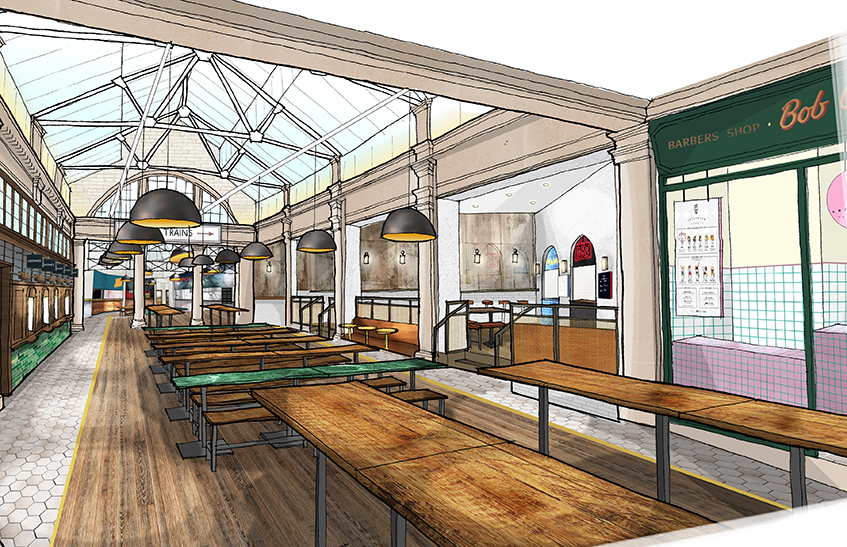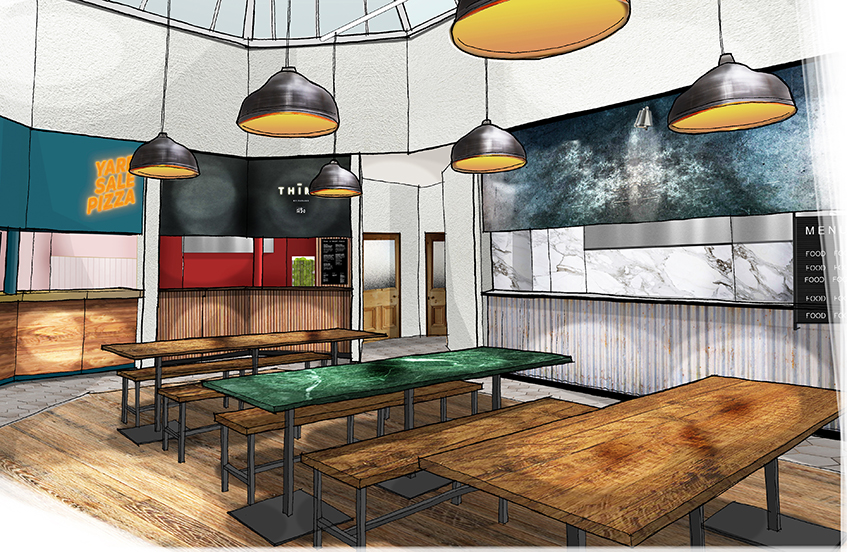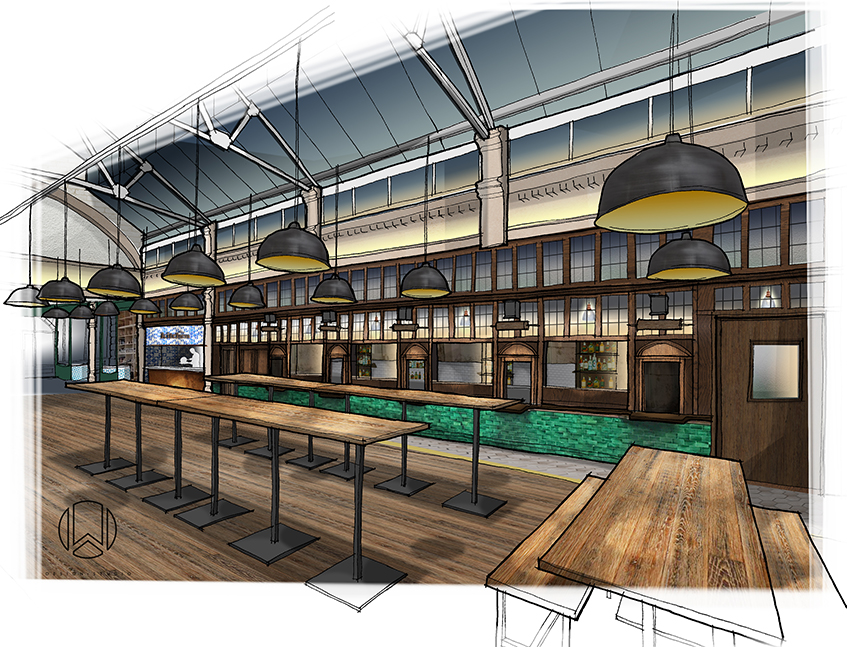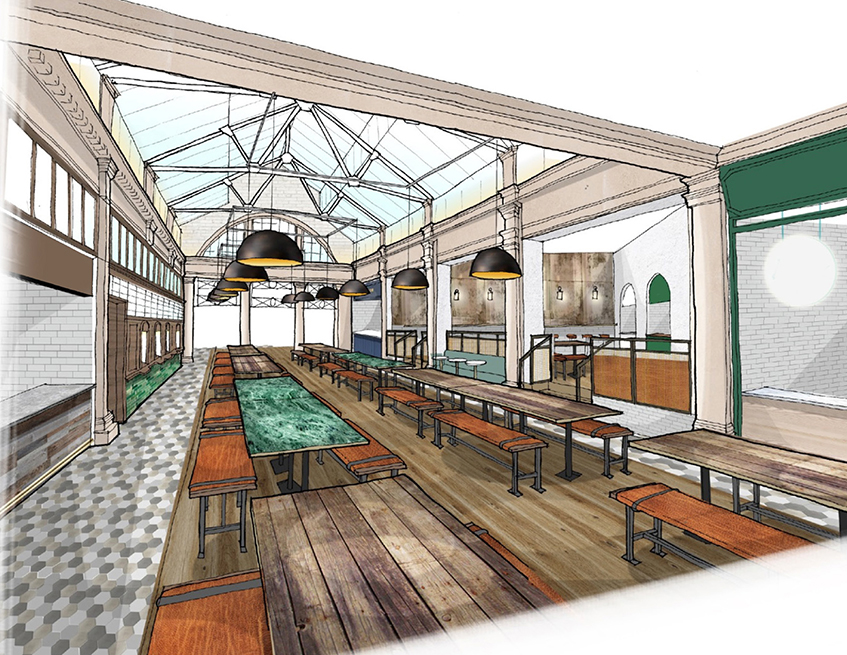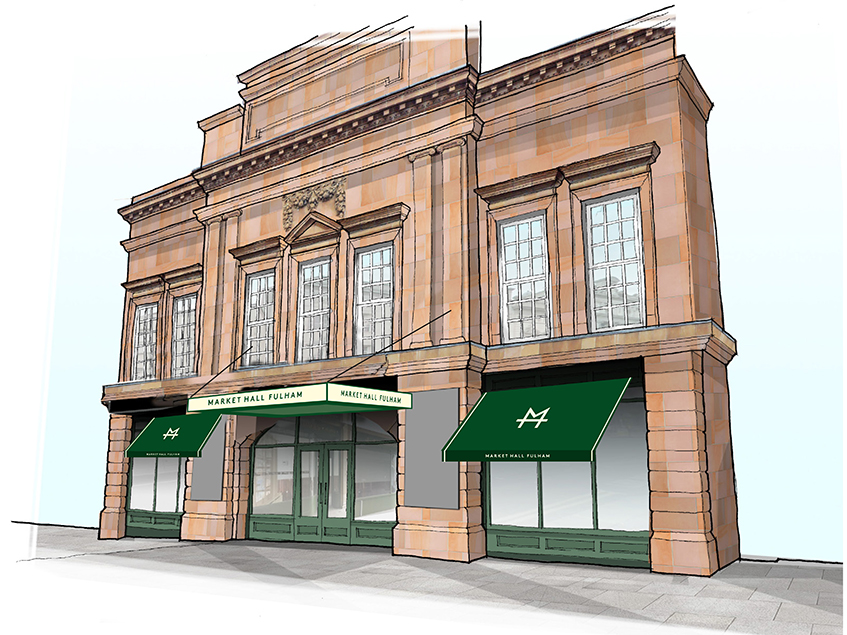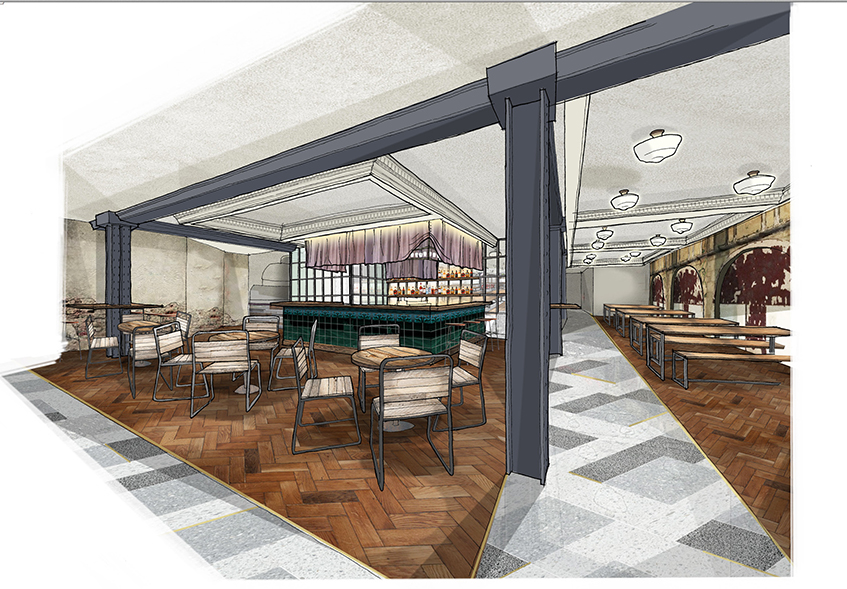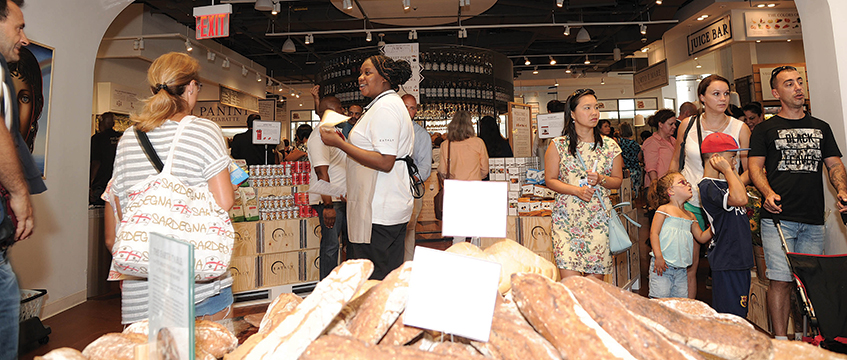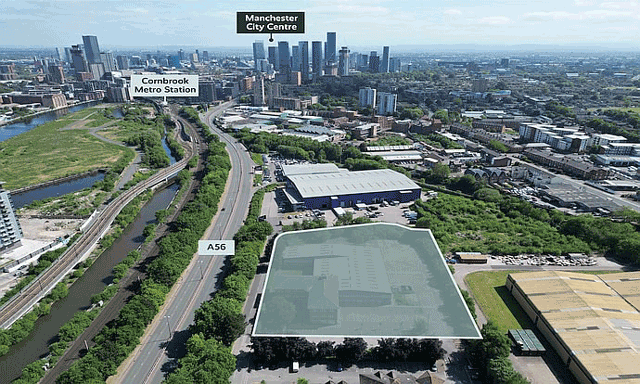The Edwardian former underground station at Fulham Broadway, SW6, has been vacant for several years. Hundreds of commuters walk past the boarded-up entrance every day, unaware of the purpose of the property, built in 1910 and with parts dating back to 1880.
But it is beginning to show signs of life. An “opening soon” sign has been hoisted over the red brick entrance and the whirr of drills can be heard working behind the scenes.
Inside, work is ongoing to transform the CBREGi-owned Grade-II listed ticket hall into the first site for the Market Hall food hall concept.
When compete there will be nine kitchens in the 10,000 sq ft hall, which the team is hoping will be open by the end of the month.
Two other London sites are in the pipeline – 14,000 sq ft opposite Victoria Station SW1, in the former Pacha nightclub on Terminus Place, and on Oxford Street, W1, taking up the remaining 32,000 sq ft in the former BHS. These will be ready later this year.
This is not a concept that is limited to London. The Market Halls team, made up of former property investor Andy Lewis-Pratt and restaurateur Simon Anderson, founder of the Pitt Cue restaurant and brewery in Spitalfields, EC2, are looking to take the concept country-wide.
It wants to open 11 markets over the next two years and is looking for opportunities in Liverpool, Manchester, Glasgow, Edinburgh, Birmingham Liverpool and Oxford. It says it has a couple of sites outside London under offer, including York, but remains tight-lipped on further openings.
Opening three food halls, totalling 60,000 sq ft, in the capital in such quick succession may seem like a bold move, but Anderson believes there is a gap in the market.
“The idea [for Market Halls] came from identifying a trend that wasn’t really being picked up in the UK,” he says. “It is a huge cultural thing in Asia and Latin America, but we never really had it. The only food halls we had were in large department stores like Harrods, so it has never really been a part of British dining culture. Perhaps its because we say that British people don’t like sharing food, but I think now it is ready to be adopted.”
Established venues
The Fulham site will host a mixture of new businesses as well as ‘local heroes’ offering dishes from established venues in the area. The kitchens will be located around the perimeter of the property, the former ticket collection point will host a bar, and there will be seating down the middle of the venue. There will also be a coffee shop and a delicatessen.
“Fulham is a brilliant test bed for our first site and will be a great local based operation,” Anderson says. “In the kitchens there will be some of London’s most interesting young traders all under one roof.”
This is what the business is looking to replicate throughout its sites.
Anderson says he and his team go through a rigorous selection process to ensure that the property is right both for the Market Hall concept, as well as for the landlord.
Fulham represents the smallest size site that it would consider at 10,000 sq ft, with larger properties such as BHS at 32,000 sq ft.
As long as the location of a site sits within the group’s desired demographics – high footfall and no competing neighbouring venues – then it is flexible in its approach to which buildings it can take on for the concept. This offers landlords sitting on what could be otherwise dormant sites the opportunity of a new lease of life for their asset.
“The idea for Market Halls came from identifying a trend that wasn’t really being picked up in the UK. “It is a huge cultural thing in Asia and Latin America, but we never really had it”
Market Halls wants to establish itself as a permanent fixture of the UK food scene and is looking to secure leases of at least 15 years for its locations. It then works with the kitchens on a concession agreement, with the shortest term being six months and the longest a year. The business model works on a share of turnover model, which Anderson believes to be the best way forward given the challenges in the industry.
“Being a restaurateur, there are a lot of constraints on the industry,” he explains. “Rents, rates and how the casual dining industry is suffering.”
Market Hall provides all the infrastructure that the chefs need as well as the services. There will be a monthly rent for use of the kitchens, but Anderson will not disclose exactly how much this is.
“It is not too significant, but is it comparable to what they would expect to pay for rates and rents in their normal business plan,” he says. “All the trader really needs to do is turn up with their equipment and staff and get trading straight away.”
Market Hall Fulham will be the first of an influx of food halls to open in London. Time Out and Eataly have also announced plans to open in the capital, although these will not be ready for business until 2020 at the earliest.
Although Italian food hall Eataly will be a permanent fixture when it opens at Broadgate, EC2, it follows a very different concept to what Market Hall hopes to achieve.
“It is one style of national cuisine and so it is a dining experience rather than a food hall,” says Anderson.
Although Market Hall will be one of the first food halls of this kind to open in London, the offerings for the consumer of this type are increasing and according to Cushman & Wakefield, there are 16 in the pipeline for London.
This, Anderson admits, could be a worry.
“That’s my biggest concern, the fact that this could quite quickly become a saturated market and that amount of choice could be negative for us,” he says. “If the quality of these places isn’t as good as it should be then the consumer could get quite fed up with it very quickly.”
Startraks Photo/REX/Shutterstock
London embraces the trend
There are more than 16 food halls planned for London over the next four years, totalling 300,000 sq ft, according to Cushman & Wakefield.
Global brands Eataly (above) and Time Out have revealed plans for sites in the capital, and new local ventures including Market Hall and established operators such as London Union are looking for sites.
Although relatively new to the London scene, the food hall concept is more than 100 years old and the recent surge in activity in London is reflective of a wider European phenomenon.
More than 20 food halls have opened in Europe since 2014 with venues including Mercado de Platea in Madrid, El Nacional in Barcelona, Copenhagen Street Food and Foodhallen in Amsterdam. There 200 venues planned for Europe over the next decade, totalling more than 4m sq ft.
Against the backdrop of a struggling food and beverage market in the UK, could food halls be the silver lining that landlords have been waiting for?
Thomas Rose, head of leisure and restaurants at C&W, thinks that the new experience that food halls offer will make them a safe investment. He says: “The new generation of food halls have experience at the very core of their DNA. The consumer is craving interaction, experience and excitement and this is the future of food and beverage.
“Consumers are moving towards an experience-based economy and food halls are definitely one part of this food and beverage landscape.”
He also points out that within the struggles in the restaurant industry, it is the chains and badly operated businesses that are suffering while the good operators are remaining to trade well.
British Land, which has selected Italian concept Eataly for its Broadgate scheme, EC2, says the food hall will act as the anchor for the project.
“It has a long trading day so will be a huge footfall driver and great for regeneration,” says head of Broadgate retail Claire Barber.
“It has a broad appeal and will appeal to office tenants, residents as well as tourists so it will be a heavily visited destination for tourists and it is acting as a real anchor.”
Food halls typically require anywhere from 10,000 sq ft to operate, which means that landlords can use them as an opportunity to secure one tenant for a large amount of space. Looking to establish themselves as more permanent fixtures than street food markets, they also take long leases.
“They are an excellent investment for landlords if you have the right space,” adds Rose. “They also offer the landlords the ability to keep the space fresh as in a 20,000 sq ft food hall you would have between 12 and 16 kiosks, so if one operator is not on trend then you can trade them out and put a new one in.”
“It is all about the location and if you do not have the right location or space then the food hall will not work,” warns Rose.
“You have to look at the competition in the local area, it needs to have an element of foodie culture, there need to be enough operators who are authentic local operators and it needs to fit with the architecture of the building and the layout of the space.”
Planning is another obstacle that both landlords and operators will have to endure and has already caused issues for some. Both London Union and Time Out Market have attempted to open sites on the eastern edge of the city at Spitalfields and Smithfield, E1, respectively, but have has their plans delayed or rejected.
To send feedback, e-mail amber.rolt@egi.co.uk or tweet @AmberRoltEG or @estatesgazette








